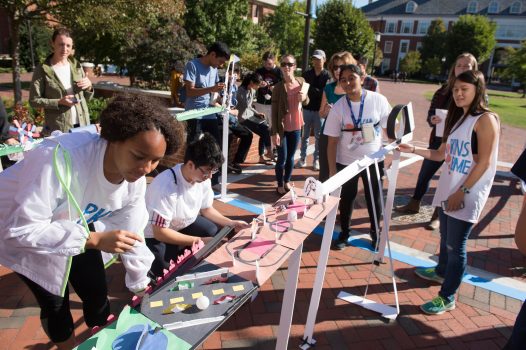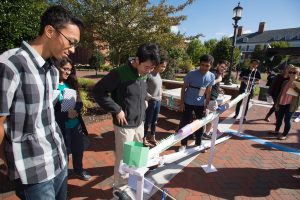Moving a Ping-Pong ball three meters may sound like a simple task, but a group of Johns Hopkins freshmen biomedical engineering students learned first-hand that sometimes the simplest task can be the most difficult.
Students in the Department of Biomedical Engineering’s Modeling and Design course were given foam core, rubber bands, wooden dowels, glue, and six hours to create two structures that could transport a Ping-Pong ball three meters. Some designs featured a series of ramps, while others were more intricate, using catapults, carts, barrels, and even a 360-degree loop.
“The teams presented their projects with a two-minute elevator pitch describing the path the Ping-Pong ball will take on its journey,” explains Eileen Haase, director of the undergraduate biomedical engineering program. “Today they demonstrated how well their devices actually work. The primary lesson the freshmen learn from this project is to allow time for testing.”
One member from each team wore a heart rate monitor to measure any changes that occurred as he or she demonstrated the team’s device. This data will be collected and used for future projects.


